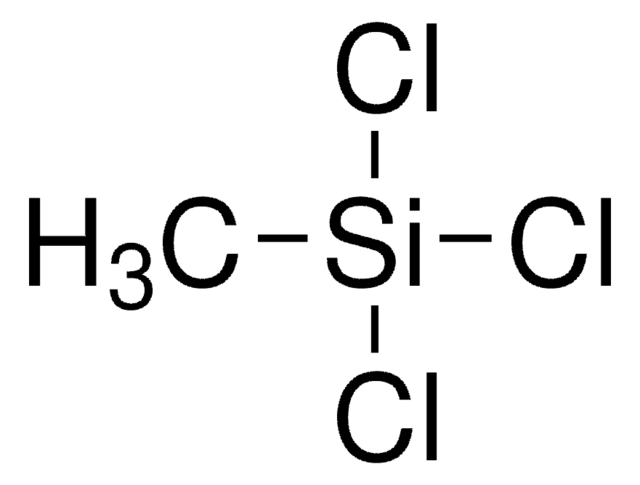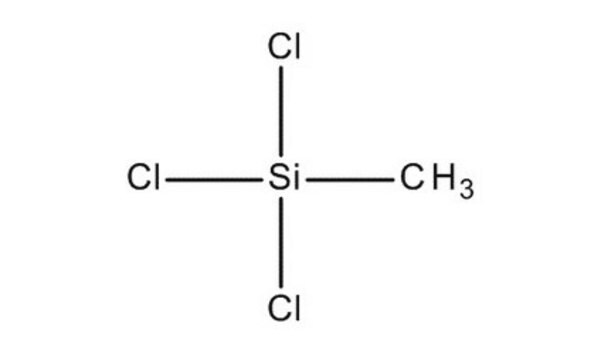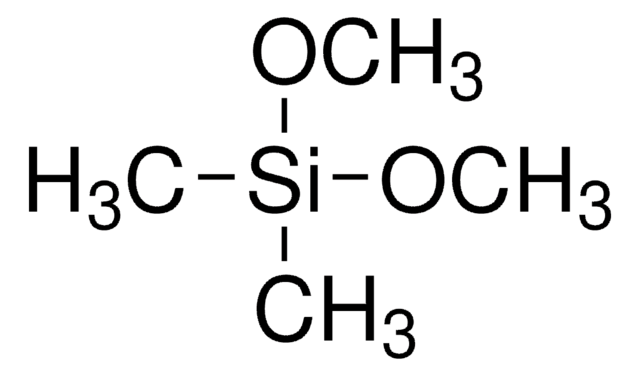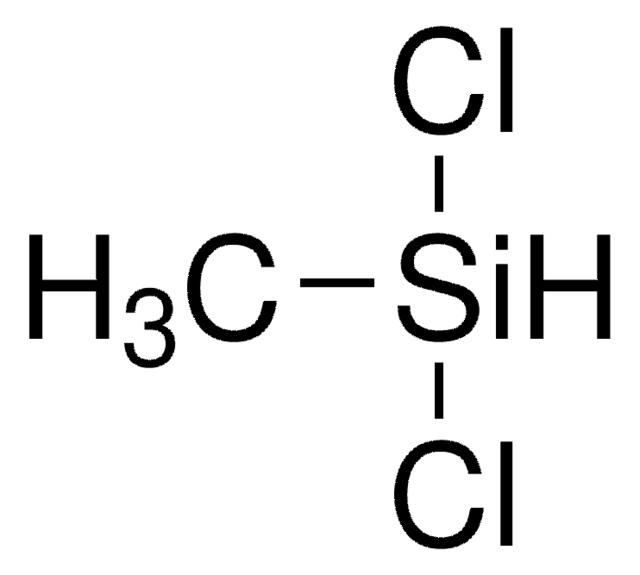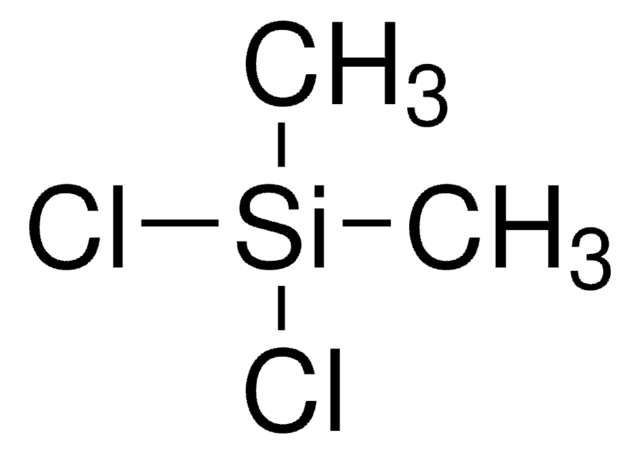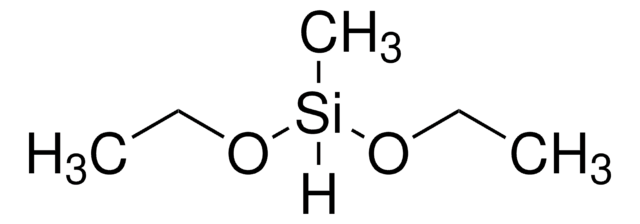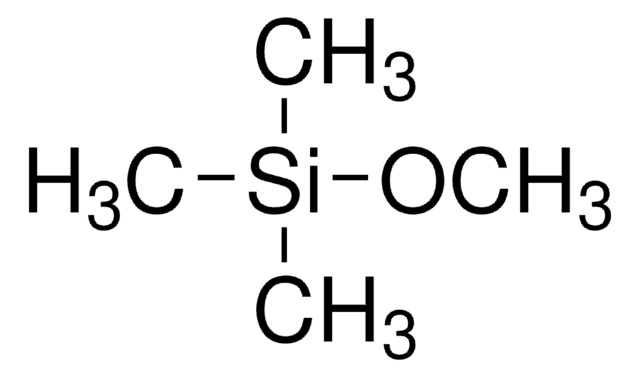679208
Methyltrichlorosilane
deposition grade, ≥98% (GC), ≥99.99% (as metals)
Synonym(s):
Trichloro(methyl)silane
About This Item
Recommended Products
grade
deposition grade
vapor density
5.2 (vs air)
vapor pressure
150 mmHg ( 25 °C)
Assay
≥98% (GC)
≥99.99% (as metals)
form
liquid
autoignition temp.
>760 °F
expl. lim.
11.9 %
refractive index
n20/D 1.411 (lit.)
bp
66 °C (lit.)
density
1.273 g/mL at 25 °C (lit.)
SMILES string
C[Si](Cl)(Cl)Cl
InChI
1S/CH3Cl3Si/c1-5(2,3)4/h1H3
InChI key
JLUFWMXJHAVVNN-UHFFFAOYSA-N
Looking for similar products? Visit Product Comparison Guide
Signal Word
Danger
Hazard Statements
Precautionary Statements
Hazard Classifications
Acute Tox. 3 Inhalation - Acute Tox. 4 Dermal - Acute Tox. 4 Oral - Eye Dam. 1 - Flam. Liq. 2 - Skin Corr. 1A - STOT SE 3
Target Organs
Respiratory system
Storage Class Code
3 - Flammable liquids
WGK
WGK 1
Flash Point(F)
46.4 °F - closed cup
Flash Point(C)
8 °C - closed cup
Choose from one of the most recent versions:
Already Own This Product?
Find documentation for the products that you have recently purchased in the Document Library.
Articles
atomic layer deposition (ALD), microelectronics, Mo:Al2O3 films, nanocomposite coating, photovoltaics, semiconductor devices, W:Al2O3 films, composite films, layer-by-layer
Silica is a very popular inorganic nanomaterial used in a wide range of applications including fillers for rubber, catalyst supports, separation media, carriers in food and agriculture, and abrasive/anticaking agents in cosmetics. It is also widely believed to be an important material for biomedical applications for following reasons.
Synthesis of Melting Gels Using Mono-Substituted and Di-Substituted Alkoxysiloxanes
Our team of scientists has experience in all areas of research including Life Science, Material Science, Chemical Synthesis, Chromatography, Analytical and many others.
Contact Technical Service